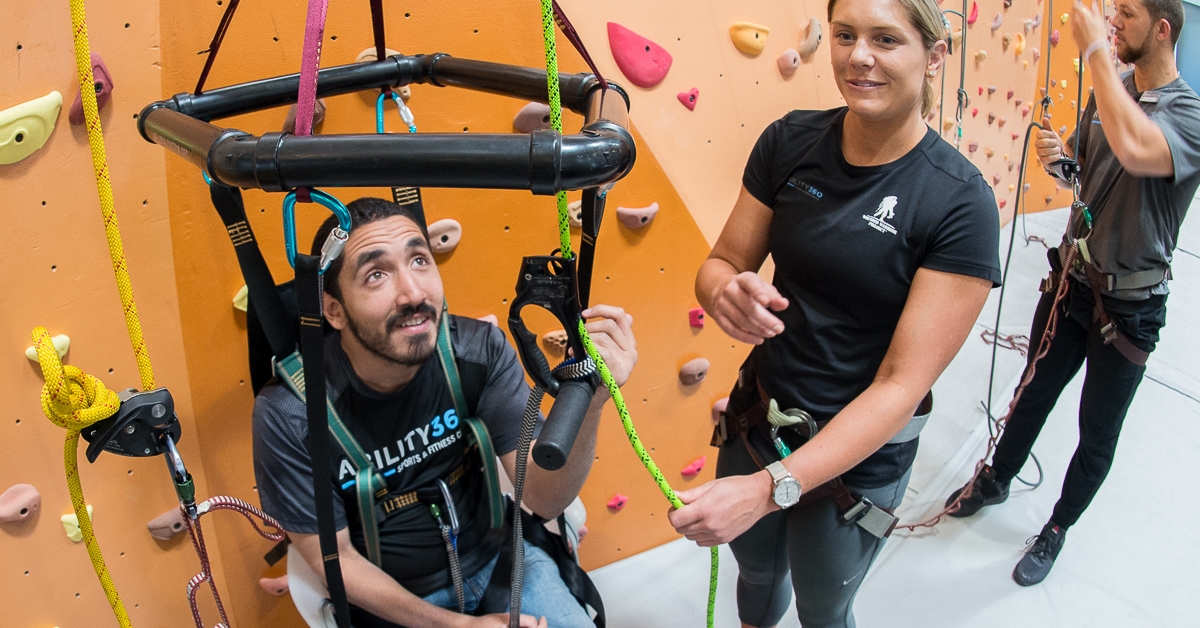
It is, however, our role as industry professionals, product developers, and members of the climbing community to fuel that passion and improve the climbing experience for as many people as possible.
We caught up with National Geographic’s 2019 Adventurer of the Year and 2x Para Climbing World Champion, Mo Beck, about how catch-and-hold technology can make auto belays a viable training tool for more adaptive climbers than ever before.
In the movie What is Adaptive Climbing?, artist and climber Jon Sedor says, “Every climber adjusts on every route they climb.” “It’s really rare that I see a man and a woman perform the same thing, especially between genders.” It’s not that one is weaker than the other; it’s just that they have distinct body types.”
Given that various bodies move and climb in different ways, the question becomes: how can we make climbing more inclusive and accessible to the greatest number of people?
Developing climbing equipment that is suitable for climbers who have historically been disregarded and underserved is one strategy to enhance inclusion.
Auto belays were previously impractical for many adaptive climbers. Climbers who were seated, for example, couldn’t practice on auto belay since lowering after a top out or a fall was too shaky. We hope to change that narrative with the recent release of the TRUBLUE iQ Plus.
The TRUBLUE iQ+ is the first auto belay system that allows climbers to stay on the wall after a fall instead of descending. This is referred to as the “catch-and-hold” functionality. In terms of climbing, the TRUBLUE iQ+ provides you with the option to take.
It works like this: when a climber falls off the wall, the TRUBLUE iQ+ catches them and keeps them moving forward. After that, the device keeps them there for up to 30 seconds. Catch-and-hold allows seated climbers to rest before continuing their climb or to re-stabilize before lowering.
“I think the TRUBLUE iQ+ is actually a great tool for Para climbing,” said Maureen “Mo” Beck, a two-time gold medalist at the Para climbing World Championships and National Geographic’s 2019 Adventurer of the Year.
Beyond the benefits for seated climbers, Beck pointed out that the TRUBLUE iQ+’s catch-and-hold capability is very handy for visually impaired climbers.
“I think it’ll be tremendous,” Beck said, “particularly for our VI blind climbers who are continually pausing to seek for grips.” “Right now, if they let go, they’ll have to retrace their steps and will be at a loss.” They can pause, feel for the holds, and then continue on their journey using the TRUBLUE iQ PLUS, which is incredible! And being able to do it without a belayer offers our impaired climbers even more freedom to just be climbers.”
-
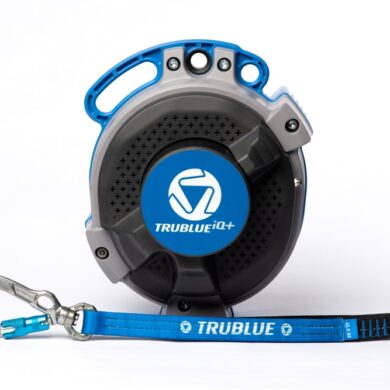 TRUBLUE iQ+ | Catch & Hold Auto Belay€ 4.399,00 – € 4.599,00 Ex VAT
TRUBLUE iQ+ | Catch & Hold Auto Belay€ 4.399,00 – € 4.599,00 Ex VAT -
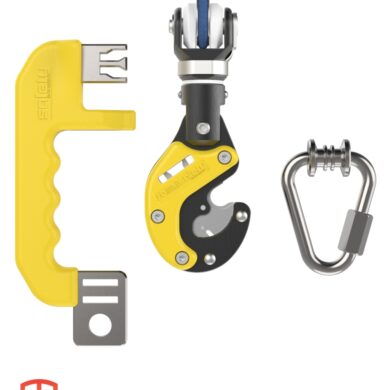 TRUBLUE Self Belay Option€ 570,00 Ex VAT
TRUBLUE Self Belay Option€ 570,00 Ex VAT -
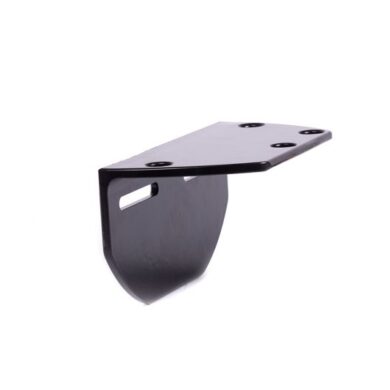 TRU-Mount | Auto Belay mounting system€ 200,00 Ex VAT
TRU-Mount | Auto Belay mounting system€ 200,00 Ex VAT
Our expertise stems from years of hands-on experience in adaptive and adventurous sports.
Our mission is to improve the availability of accessible climbing and other disability sports in the adventure activities industry. Adaptive climbing, also known as paraclimbing, allows anyone with any form of physical limitation to climb. Our goal is to equip you with the necessary tools and abilities.
With the use of the TRUBLUE Auto Belay, a climber can be protected without the aid of a partner. The TRUBLUE Auto Belay magnetic braking is distinct since there are no parts in touch within the braking system, in contrast to conventional belay devices that rely on friction to create a braking force.
What exactly is it? Inclusion is defined as….
Climbing for those with impairments, disabilities, SEN, and/or chronic long-term medical issues is referred to as para-climbing. However, where climbing activities and/or settings must be positive for those with mental health issues and/or supportive of a diverse group of people, inclusiveness may be essential.
What is the best way to go about it?
How to create inclusive activities and make rock climbing more inclusive.
We’re here to make climbing and the climbing community more inclusive by supporting and/or establishing an atmosphere and activities that allow everyone, regardless of handicap or impairment, to climb. Our long-term goal is to make knowledge and advice widely available. We achieve this through publications, individual instruction and technical guidance, a climbing wall, or a rock climbing/adventure activity.
People with permanent physical or developmental limitations can climb with the group on the TRUBLUE iQ PLUS. They provide volunteers with a variety of tactics, tools, and training to enable them to climb.
Climbing without boundaries is possible by changing their strategy. Climbing on the wall is open to people of all abilities, including the visually impaired, amputees, cancer and stroke survivors. It not only gives you a sense of accomplishment and fresh confidence, but it also gives you a place to belong.
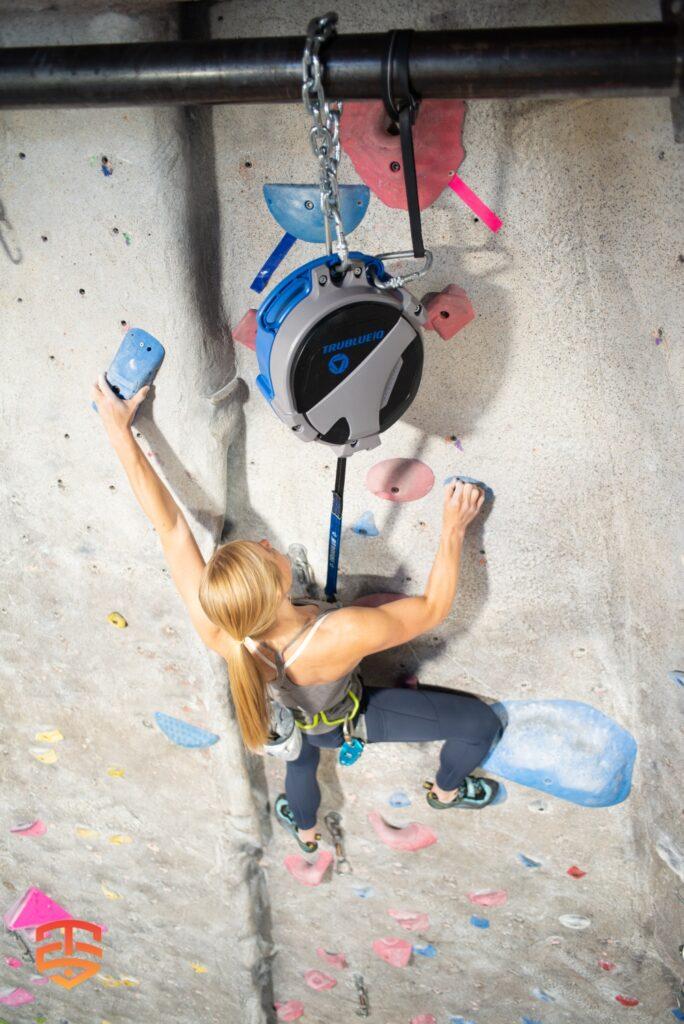
Vertical Auto Belay systems
Grow your climbing community by providing more access to more routes for more climbers.
Auto Belay makes climbing simple and approachable, turning first-time users into return customers. TRUBLUE Auto Belays are engineered to minimize maintenance and are built to last. Our patented magnetic braking system, delivers the smoothest user experience, the highest level of reliability, and dramatically reduces device downtime.
Dive Deeper: Exploring Auto Belay Technology with Expert Insights
Auto belays are transforming the world of indoor climbing, offering convenience and safety for climbers of all levels. But how exactly do they work, and what are the key considerations for using them? To learn more about the intricacies of auto belay technology and gain valuable insights from experts in the field, check out our additional resources below…
- Comparison of Auto Belay’s: what’s new in the TRUBLUE iQ series
- Using Technology to Make Your Climbing Gym Accessible and Inclusive
- A Closer Look at the Auto Belay System
- Next Generation Auto Belay – TRUBLUE iQ
- Every modern climbing gym should have these 5 features
- Everything You Need to Know about Buying Auto Belays
- Increase Revenue and Customer Satisfaction at Family Entertainment Centers
- Catch-and-Hold: What is it and how does it work?
- Leading the Way in profitable and safe climbing
- Why Family Entertainment Centers Trust TRUBLUE Auto Belays
- Creating Value for Customers by Using an Auto Belay
- TRUBLUE iQ+ World’s first catch-and-hold auto belay
- Drive Revenue and Customer Satisfaction with Auto Belays
- 7 Ways Magnetic Braking Is Better Than Friction
- No Belayer Necessary: Understanding Auto belays
- Competitive Advantage of an Auto Belay
- ROI at Climbing Walls and Family Entertainment Centers
- Auto-Belay and hands-free climbing challenges
- Why using Auto Belays Boosts your Business
- The Science of Eddy Current Magnetic Braking
-
 TRUBLUE iQ+ | Catch & Hold Auto Belay€ 4.399,00 – € 4.599,00 Ex VAT
TRUBLUE iQ+ | Catch & Hold Auto Belay€ 4.399,00 – € 4.599,00 Ex VAT -
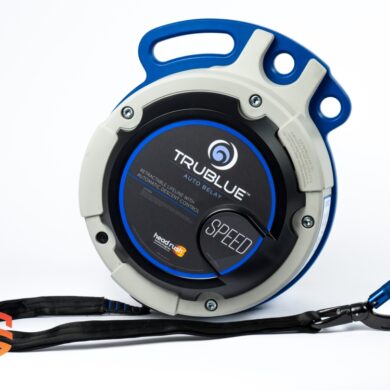 TRUBLUE SPEED Auto Belay | 7,5 – 16 meter€ 2.799,00 – € 2.899,00 Ex VAT
TRUBLUE SPEED Auto Belay | 7,5 – 16 meter€ 2.799,00 – € 2.899,00 Ex VAT -
 TRUBLUE iQ Auto Belay | 4,5 – 20 meter€ 2.799,00 – € 2.999,00 Ex VAT
TRUBLUE iQ Auto Belay | 4,5 – 20 meter€ 2.799,00 – € 2.999,00 Ex VAT







